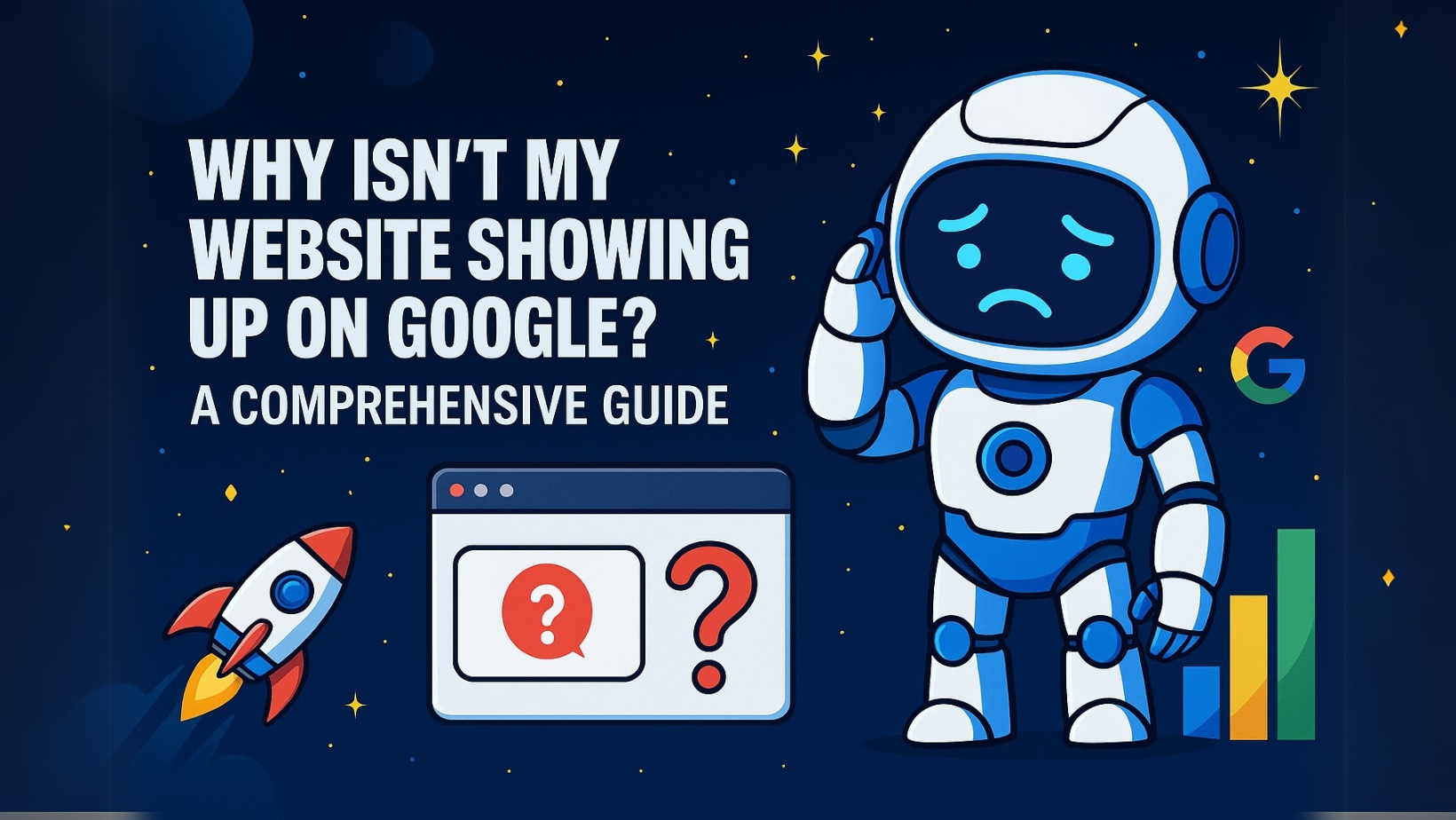
Choosing the right automated SEO reporting tool can make all the difference for digital agencies, freelancers, business owners, and web developers looking to streamline their SEO reporting.
Manually collecting SEO data from various sources and compiling client-friendly reports is time-consuming and tedious.
A good automated tool not only saves you hours of work, but also helps demonstrate the value of your services and keep open communication with clients.
In this article, we’ll explore what to look for in an SEO reporting tool – from ease of use and customization to data accuracy – and why these factors matter. By the end, you’ll know how to select a solution that saves time, improves client communication, and helps you make smarter SEO decisions.
Why Automated SEO Reporting Matters
Here are a few reasons an automated reporting tool is invaluable:
-
Time Savings: Automation frees you from repetitive manual data gathering. Your team can focus on strategy and implementation instead of wrangling spreadsheets. In fact, using report templates or dashboards can “save loads of time” compared to building reports by hand. This efficiency lets you dedicate more effort to optimizing campaigns and delivering results.
-
Consistency & Client Communication: Regular, automated reports ensure you stay in touch with clients without extra effort. Scheduling weekly or monthly updates keeps clients in the loop on progress, fostering transparency and trust. Comprehensive reports demonstrate the value of your SEO work and serve as a critical communication channel between you and your clients. Clients appreciate seeing exactly how your efforts impact their business.
-
Data Accuracy: Automated tools pull data directly from sources and reduce the chance of human error. This means more accurate, reliable metrics in your reports. When managing many clients, it’s easy to make mistakes copying data; automation avoids that and ensures each report is based on solid data. Top SEO platforms pride themselves on providing “accurate and timely” data updates for performance tracking, so you can trust the numbers when making decisions.
-
Better Decision-Making: With consistent, up-to-date reports, you can spot patterns and trends more easily. SEO reporting tools break down complex data to help you identify what’s working and what isn’treportgarden.com. By having key metrics and trends at your fingertips, you can quickly adjust your SEO strategy and make smarter decisions to improve results. In short, automated reports give you actionable insights, not just raw data.
In summary, the right tool lets you spend less time reporting and more time optimizing. It improves the quality of your client interactions and provides a strong foundation for data-driven SEO strategies. Now, let’s look at the key criteria to evaluate when choosing an automated SEO reporting tool.
Key Criteria for Selecting an Automated SEO Reporting Tool
When comparing SEO reporting tools, keep the following factors in mind. The best tools will check most (if not all) of these boxes, ensuring you get maximum value and efficiency from your reporting process.
1. Ease of Use and User-Friendly Interface
One of the first things to consider is how easy the tool is to use. A complex, clunky interface can negate the time-saving benefits of automation. Look for a platform with a straightforward, intuitive interface that’s easy to navigate for all skill levels.This means even if you’re not a technical SEO wizard, you should be able to generate reports without extensive training or frustration.
Key questions to ask: Is the dashboard clean and well-organized? Can you set up and schedule reports without reading a textbook of documentation? The best SEO reporting software emphasizes usability – often with drag-and-drop report builders or one-click integrations – so you don’t waste time figuring out how to get the data you need. A user-friendly tool ensures you and your team can quickly adopt it and start automating reports right away.
2. Report Customization and White-Label Options
Every client is different, and one-size-fits-all reports often miss the mark. A great reporting tool should allow extensive customization of your reports. This includes the ability to choose which metrics or sections to include, tailor the layout, and add your own branding (logos, colors, and styling).
White-label capabilities are especially important for agencies and freelancers who want to present the report as their own work. With white-label features, you can generate reports that match your brand – e.g. with customizable headers/footers and templates – so the output reinforces your professionalism.
Customization ensures the report highlights what matters most to each client. For example, you might emphasize local SEO metrics for a local business, or focus on e-commerce sales and conversion data for an online store. The tool should let you rearrange or include modules based on client goals, rather than forcing a generic report on everyone.
White-labeling goes hand-in-hand with this. Being able to slap on your logo and present a polished report builds trust. Clients get a report that looks like it was made just for them by your agency – which it essentially was, thanks to the tool. According to experts, the more customization options available, the more professional and on-brand your reports will look, which boosts your agency’s credibility. So, prioritize tools that let you tailor both the content and appearance of reports.
3. Integration with Key SEO and Analytics Tools
Think about all the data sources you typically use for SEO insights: Google Analytics, Google Search Console, keyword ranking tools, backlink trackers, social analytics, local SEO tools, and so on. A strong automated reporting tool should be able to pull in data from multiple sources seamlessly.
Integration is crucial because a report is only as good as the data that feeds into it. Instead of manually exporting and combining data, your reporting software should connect via APIs to these services and automatically import the latest metrics.
When evaluating options, check what integrations are offered. At minimum, look for native integration with Google Analytics and Google Search Console, since these provide core website traffic and search performance data. Many top reporting platforms also connect with popular SEO software like SEMrush, Ahrefs, Moz, Majestic, or local SEO databases. The more sources you can integrate, the more comprehensive your reports will be. For instance, an ideal tool might allow you to unify data on keyword rankings, technical site audit results, PPC metrics, and social media performance all in one dashboard.
Integration not only saves you from copy-pasting, but it also means the tool can update data automatically from each source. As Vendasta’s guide notes, you’ll want a tool that connects to all your important SEO tools so that data can be pulled, analyzed, and displayed in the report automatically. This ensures your client report is a one-stop shop for all relevant insights, giving a 360° view of their online presence.
Moreover, strong integration capabilities future-proof your reporting process. If your clients’ needs grow (say they start caring about social media or local search), your reporting tool can accommodate that by hooking into the necessary platforms. In summary: choose a reporting tool that plays nicely with the rest of your SEO stack – it will make your life infinitely easier and your reports more valuable.
4. Data Accuracy and Update Frequency
Automated or not, a report is useless if the data isn’t accurate and up-to-date. Pay attention to how each tool gathers and updates its data:
-
Accuracy: The tool should retrieve metrics from reliable sources and calculate KPIs correctly. Because automation removes manual errors, many tools actually improve accuracy – for example, by eliminating copy-paste mistakes or formula errors in spreadsheets. Still, it’s worth verifying how the tool handles data. Does it pull directly from official APIs (ensuring fidelity)? Does it have any known issues with data discrepancies? Reviews and trials can help here. In the SEO world, trusted tools highlight their accurate data (e.g. Ahrefs is known to provide “accurate and timely ranking data” for tracking keywords). The bottom line is that you and your clients should be able to trust the numbers in the report.
-
Update Frequency: Different tools update their data at different intervals. Some might refresh keyword rankings daily, others weekly. Some analytics integrations might show data in near real-time. Consider how often you need the data to be updated for your reporting needs. If you promise clients a monthly report, weekly or daily data updates may be sufficient. But if you’re providing a live dashboard or very frequent reports, more frequent updates are better. Also, look at how often the tool itself can send out reports. The best solutions allow you to schedule automated report delivery on your desired cadence – whether that’s weekly, monthly, or quarterly – with the latest data included. You set it up once, and the tool takes care of fetching fresh data and emailing the report, for example.
In short, reliability is key: the tool should deliver correct data and do so consistently. A regularly updated tool means you’re always basing decisions on current information, not last month’s stats. When comparing options, check if the tool mentions data latency or how frequently it updates from each integration. A quality SEO reporting platform will emphasize providing up-to-date metrics so your reports reflect the current state of your SEO performance.
5. Pricing and Value for Money
Finally, consider your budget and the pricing model of the tool. SEO reporting tools range from free basic solutions to enterprise-level software costing hundreds per month. More expensive doesn’t always mean better for your needs – it’s about finding the right balance of features and cost.
Start by evaluating what features you truly need and how many client reports or projects you’ll manage. Many tools have tiered pricing based on number of users, number of clients or domains, or access to advanced features (like white-label or API access). Avoid overpaying for capacity you won’t use, but also be careful not to under-invest in a tool that could significantly streamline your work.
Keep in mind that dedicated reporting solutions can be somewhat costly and might strain your budget, especially for small agencies or freelancers. The good news is there are options at every price point. For example, Google’s Looker Studio (formerly Data Studio) is free for creating basic automated reports, though it may require more manual setup. Some all-in-one SEO platforms include reporting in their package, which could be cost-effective if you’re already paying for the platform. There are also affordable niche tools focused on reporting.
When looking at pricing, also consider the value of your time saved. If a $50/month tool saves you 10+ hours of work, it likely pays for itself. Also factor in intangible benefits: will the tool help you retain clients or win new ones ? Those outcomes are hard to put a price tag on but are very important.
Tip: Many paid SEO reporting tools offer free trials or freemium plans. Take advantage of these to test the waters. And don’t forget to check if the tool offers a free audit or report option – some services let you run a free report which can be a great way to evaluate capabilities at no cost.
Speaking of free audit tools, let’s look at an example that illustrates many of the points we’ve discussed.
Example – A Free Automated SEO Audit Tool That Checks All the Boxes
To see these criteria in action, consider HighLevel’s free automated SEO audit service (sometimes called the “SEO X-Ray” report). This tool is a great example of an automated reporting solution that meets key requirements without breaking the bank (in fact, it’s free!). Here’s how it aligns with the selection criteria:
-
Ease of Use: The audit is extremely user-friendly – you simply enter your website URL and let the tool do the rest. There’s no complicated setup. In just a minute or two, it generates a comprehensive report. This makes it accessible to anyone, from seasoned developers to business owners who might not be SEO experts.
-
Comprehensive Data & Accuracy: HighLevel’s audit provides an all-in-one “8-point” SEO analysis, covering every critical area of SEO from on-page factors and keywords to backlinks, site performance, usability, social presence, local SEO, and technical/security issues. Because it scans your site across these areas, you get a 360° website evaluation in one report. The data is pulled from live analysis of your site, ensuring it’s up-to-date and relevant. The breadth of this audit means no major aspect of SEO is overlooked – it’s as if you combined multiple specialized tools into one report.
-
Actionable and Customizable Output: The generated report isn’t just raw data. It comes with clear grades, insights, and prioritized action steps for each issue found. In other words, it not only flags what’s hurting your rankings, but also tells you how to fix it. This actionable approach saves you time interpreting the data. While this free audit tool is not something you’d brand with your own logo (it’s provided as a service), it effectively demonstrates customization in terms of focusing on what matters – e.g. highlighting the most important fixes first. The readability of the report makes it easy to share with team members or clients to discuss next steps.
-
Integration & Flexibility: This particular tool focuses on auditing your website directly, so it doesn’t need to integrate with external services to gather data – the analysis is done via its own crawlers and checks. The benefit here is you can use it alongside your other tools seamlessly. For instance, you might run this audit to get an overview and then use a specialized tool for deeper dive into a specific area if needed. It works with any website (it’s platform-agnostic, supporting all major CMS platforms like WordPress, Shopify, etc.), which showcases its flexibility.
-
Frequency and Updates: You can use the HighLevel audit tool as often as needed – for example, run a free audit after making site changes or on a monthly basis to track improvements. Because it’s automated, you’ll get consistent results each time. And since the team behind it keeps the auditing criteria aligned with current SEO best practices, the report will evolve as SEO standards change. Essentially, it’s a reliable, always-available check-up for your site’s SEO health.
-
Price: It’s hard to beat free! This audit costs nothing, which is ideal for those on a tight budget. Despite being free, it delivers a level of detail comparable to paid audits. This makes it a low-risk way to experience the benefits of automated SEO reporting. You can always use it as a supplement to other reporting tools – for instance, to quickly spot issues in between your regular monthly reports from another system.
In summary, HighLevel’s SEO audit service serves as a handy example of what to look for. It’s easy to use, thorough in data coverage, provides actionable insights, and doesn’t cost a dime. While your needs might require a more full-fledged reporting platform for ongoing client reporting, starting with a tool like this is an excellent way to immediately save time and improve your SEO decision-making. It showcases how an automated tool can quickly highlight what’s working and what’s not on your site – exactly the kind of insight you want from any reporting solution.
Conclusion and Next Steps
Choosing an automated SEO reporting tool comes down to finding the solution that best balances features, ease of use, and value for your situation. The right tool will save you time, provide accurate and insightful data, and help you communicate results to clients more effectively. Remember to consider ease of use, customization/white-labeling, integrations, data accuracy/updates, and pricing as your core criteria. A tool that excels in these areas will empower you to spend less time generating reports and more time acting on the insights they provide.
Now that you know what to look for, you might be eager to see the benefits for yourself. One easy way to get started is to try a free SEO audit using the service we discussed above.
This will give you a firsthand look at how automated reporting can identify your website’s strengths and weaknesses in minutes. Give HighLevel’s free SEO audit a try – it’s a quick, zero-cost step to experience effective SEO reporting in action. By leveraging such tools, you’ll streamline your reporting process and be well on your way to improving your SEO performance and client satisfaction. Happy reporting!
Related Posts




